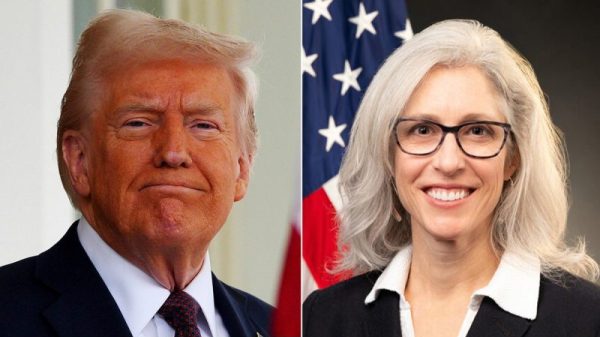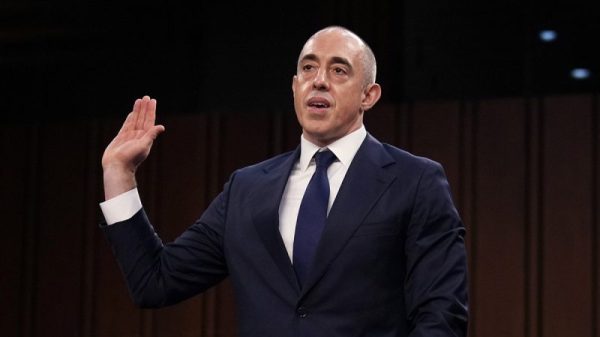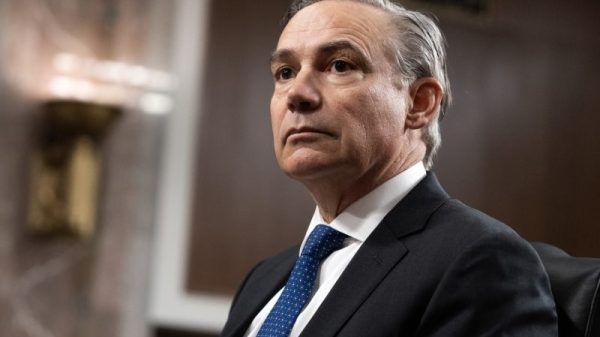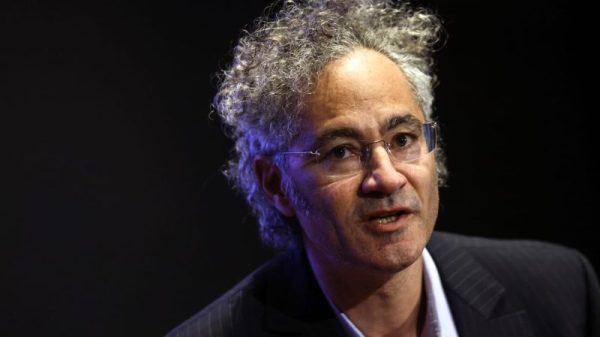On September 9, 2009, President Barack Obama addressed a special joint session of Congress and implored the assembled legislators to ensure all Americans, without exception, were enrolled in secure and affordable health insurance. Referring to the uninsured, he said “we are the only … wealthy nation that allows such hardships for millions of its people.”
Universal coverage advocates rejoiced as they sensed the best opportunity in memory to reach their long-sought objective. In March 2010, after a heated debate, Congress approved the Affordable Care Act (ACA) on a party-line vote. In the years that followed, those who fought for its passage have become even more convinced that the debate marked a seminal moment in US social policy.
And yet Liran Einav and Amy Finkelstein, two of the nation’s most accomplished health economists, see what occurred differently. In their recent book, We’ve Got You Covered: Rebooting American Health Care, they argue that the country’s uninsured problem remains acute and morally unacceptable, even with the ACA in place. Their view accedes that the ACA was directionally right, but (to use their preferred metaphor) it was another subpar remodeling effort when a full tear-down and rebuild is necessary. From their perspective, everything must go, to make room for a sturdier dwelling. That means full repeal of the ACA, and of Medicare, Medicaid, and tax support for employer coverage too. Theirs would be radical surgery indeed.
Much of the book is about convincing the reader that this recommendation is justified by the shoddiness of current rules and programs. Given the leap that would be required, the case would need to be considerably stronger than what is presented.
Identifying the Cracks
The book is divided into two parts.
The first is a presentation of the authors’ rationale for what they believe should be the primary objective of a health insurance system in every high-income country, along with a review of the many ways the US fails to achieve that central objective. The second offers a plan for constructing a better edifice.
The style throughout is journalistic rather than academic. Both are accomplished social scientists credited with scores of insightful research efforts (Einav is an economics professor at Stanford University while Finkelstein is at MIT). They sprinkle the book with references to the consensus findings from their profession, but the intended audience here is the general public, not their fellow professional travelers. As such, they rely more on stories and anecdotes than data to develop their argument.
They have plenty of material to work with, even post-ACA. With so many insurance options, and poor coordination among them, it is not hard to find vulnerable Americans who have been left in impossible situations by today’s maddeningly complex environment. The authors recount the story of a man who was just short of Medicare’s eligibility age (65) and yet also unaware of special coverage he could have had when a fever sent him to the hospital in early 2020 (a negative COVID test ruled out one type of assistance). A year later, the hospital was trying to collect on some $20,000 in unpaid bills. They also cite numerous examples of patients facing exorbitant charges despite being insured.
The intended takeaway is that the country still has a wholly inadequate insurance coverage system, despite the best intentions of many lawmakers over the years. It is not, as they note, that Americans want their fellow citizens to go without needed services or to face unpayable bills. Rather, the problem is one of haphazard construction driven by political expediency. Americans want their neighbors to get beneficial medical care even when they cannot pay for it. But that impulse has not translated into an effective policy design.
The causes for the failure are multiple, according to Einav and Finkelstein, but fall under a general heading of excessive complexity. Instead of a simple universal plan, the US has tried to construct a patchwork approach to address the many varied reasons why a person might be vulnerable to uninsured costs. The end result, in the authors’ estimation, is a faulty system with wide cracks that many fall through, and many more might if fate dealt them a bad break or two.
An NHS With Singaporean Characteristics
And so what should the US do instead?
Einav and Finkelstein cite several international examples approvingly, with a focus on a combination of the U.K. and Singapore. The first component would be something like the British National Health Service. All Americans would be eligible for it automatically. The second would be a permissive, privately run (but probably federally regulated) supplementary insurance system that individuals could voluntarily join and pay for themselves.
If built successfully, this simple structure would have some strong selling points and would likely be popular with many voters. Most importantly, all Americans would know with certainty that they would have permanent and irrevocable access to medical care when they really needed it, even if they did not buy a personal insurance plan. There would be no enrollment process. Eligibility would be based on birth and residency. And there would be no premiums, deductibles, nor co-pays either. The costs would be paid from taxes, which means the burden would likely be heavier on those who can pay more and less on those with modest incomes.
The government would set a budget for the public plan but how it would be enforced is left unstated. With repeal of Medicare and Medicaid, the resources set aside for those programs could be redirected to the universal plan. Presumably, the government would reduce reimbursements to hospitals and doctors as needed to keep costs in check, as is done today with public insurance.
Einav and Finkelstein are well aware of the history showing public insurance tends toward long wait times and inadequate supplies of services. Their remedy – modeled on Singapore – is a supplementary private market that they expect a large majority of Americans would join. They emphasize an important detail: this additional insurance would only pay for the incremental costs above the amounts public insurance would pay for the same services. This stipulation is critical, as it would prevent consumers from double-paying for the same services (once through taxes for the public plan and then again through premiums for a duplicative private offering). With supplemental coverage, patients could get shorter wait times for services and perhaps better-quality care, owing to the ability to pay more for services. The existence of this private market would serve as a safety valve for the public plan by providing an additional source of funding outside of the government’s budget. It would also reduce demand for publicly funded care.
What’s Missing?
The authors nod toward some of the objections their plan would face (beyond the obvious hurdle of getting elected officials to repeal Medicare, Medicaid, and the ACA) but fail to really wrestle with several important concerns.
A first consideration is a lack of perspective. According to the Kaiser Family Foundation, there were 25.6 million uninsured Americans in 2022 under the age of 65, which, at 9.6 percent of the total population in this age group, was the lowest rate ever recorded. Only 1.5 million people, or less than 1.0 percent of the total US population, had low incomes and yet were ineligible for Medicaid. The rest of the uninsured – some 24 million – were either eligible for affordable coverage but had not signed up, or else were residing in the US without proper legal authority to do so.
Put another way, Einav and Finkelstein would set aside the system now in place, built over approximately 80 years, with all the upheaval that would entail, to guarantee coverage to a relatively small segment of the overall population.
A second unmentioned objection is the political struggle that their plan would ignite. They are explicit in endorsing a two-tiered system of health insurance, with a basic plan providing security for everyone and supplemental coverage offering better access to those who could afford it. They expect most enrollees in Medicare and employer plans would buy a supplemental policy (combined, that’s over 200 million people).
It should go without saying that not all factions in American politics would find this compromise acceptable. Many would embrace the egalitarian public plan and then wage war on any possibility of escaping it. Moreover, this fight would never end, as can be seen in the ongoing battles over wait times in the NHS and Canada.
Third, the authors never grapple seriously with one of the most important considerations, which is the mechanism for allocating resources in the broader economy and within the health sector. They contend that the NHS offers a model worth emulating, but without acknowledging its abysmal record of capital investment spanning several decades. Communities in the UK wait years for the government to put them on the list of potential future hospital investments, only to learn of delays owing to insufficient funds. Full reliance on a public budgeting system for providing access to medical care is a certain prescription for millions of disappointed patients.
Remodeling, Again
Despite serious omissions, the book offers important insights, including the observation that today’s harmful insurance coverage disconnects are partially caused by repetitive enrollment processes. With multiple insurance platforms, the participating plans want to be sure they are paying only for the claims of their customers and not others. Thus, individuals carry some responsibility for signing up for the insurance they are eligible for, which is why, for various reasons, some end up without any coverage at all.
Einav and Finkelstein favor a universal public plan in large part because enrollment is automatic. There is no need to fill out a bureaucratic application.
It would be possible, however, to benefit from automatic enrollment without throwing out today’s insurance system entirely. For instance, individuals could be determined eligible each spring (during tax season) for Medicaid coverage based on last year’s income and then allowed to keep it for a full year (enrollment out of this period would still be possible for the numerous other qualifying events, including loss of another plan). Similarly, those with incomes above Medicaid’s limits could be placed into ACA coverage if they fail to select a plan themselves (the deductible could be adjusted to ensure their subsidies covered the full premiums). Finally, employers could be allowed to make enrollment in their offerings the default option unless workers attest to having other insurance (through a spouse, for instance).
Another important step would be to close the coverage gap in Medicaid in those states with very low income standards. Instead of penalties, the federal government should try offering these states more flexibility in return for moving the threshold to at least the federal poverty line.
Further, Medicaid could become the insurance plan for the unemployed. Any worker with a sufficient record of earnings could qualify for one year of coverage when in-between jobs regardless of their other sources of income. This expansion would offer more security to the millions of people who are at any given moment at risk of temporary job loss.
Lastly, a plan to stabilize the insurance safety net should be coupled with reforms to promote much stronger market discipline in the provision of medical services. Einav and Finkelstein sidestep this question based on their view that research has yet to provide clear answers about what could be done without harming access to beneficial care. But this explanation suggests that such research may be forthcoming, which is not likely, given the difficulty of untangling the many different forces at work in the health sector.
There is plenty of direct and indirect evidence that better market incentives would improve productivity in hospitals, physician practices, and other settings and thus lessen cost pressures without harming the quality of care provided to patients. What is needed are sensible steps to make it easier, and more financially rewarding, for millions of American insurance enrollees and patients to identify and select lower-priced but still high-quality options for their coverage and medical care. That would be possible with rules that structure the market to allow for ready cost comparisons.
The Next Reform
While Einav and Finkelstein fall short of making a strong case for starting from scratch, they do offer an articulate defense of the kind of insurance system that some countries might consider if what they have today is not entrenched and their population is politically homogenous and of a mind to trust their public institutions.
That is not a description of the United States. For better or worse, Medicare, Medicaid, the ACA, and employer coverage are not going anywhere anytime soon. Fortunately, retention of these long-standing insurance arrangements is not inconsistent with offering more secure and reliable coverage to all Americans, with enhanced cost discipline. As always, the country is another remodel away from something better, but far from perfect.

































